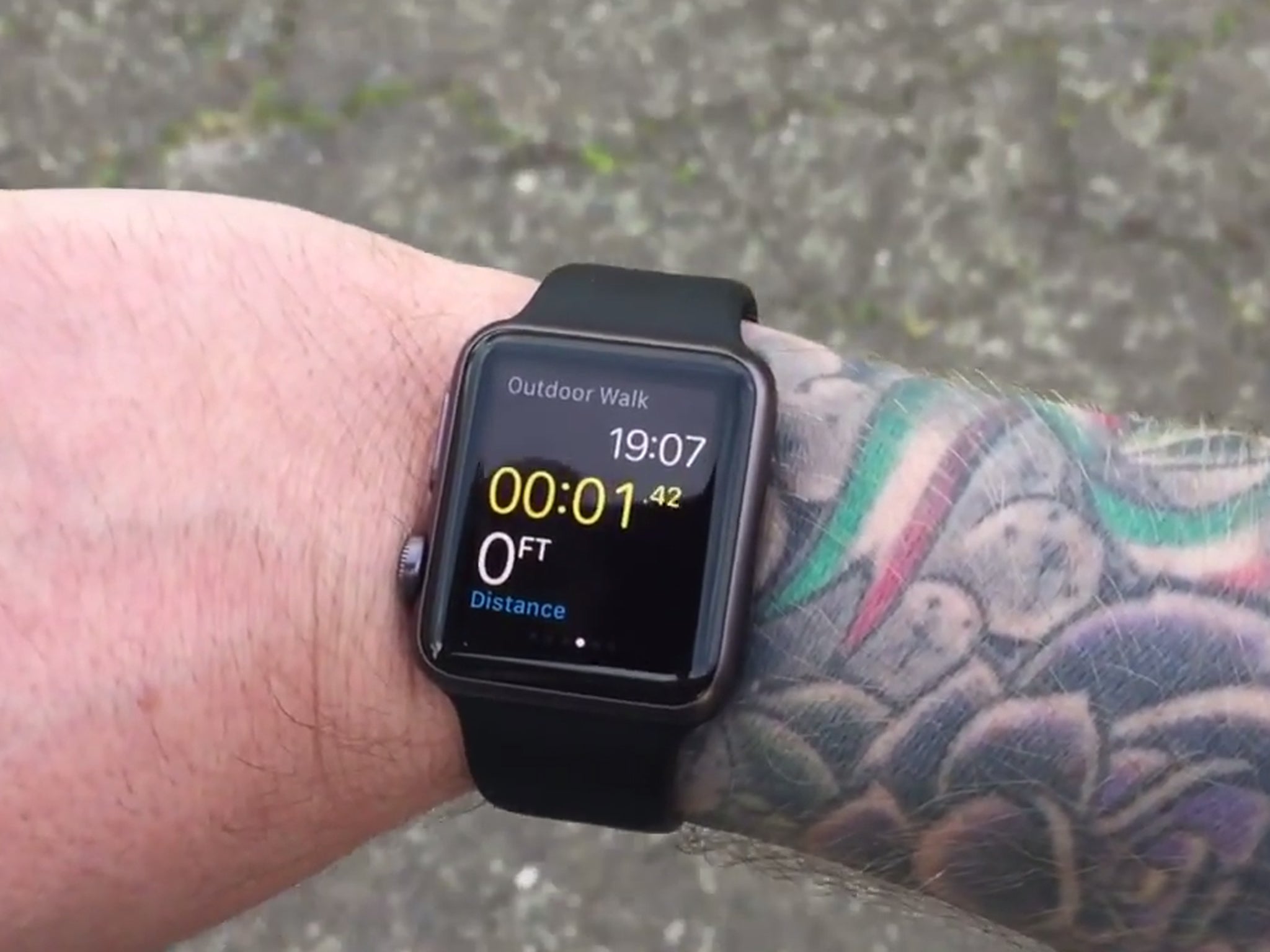Apple Watch tattoogate: smartwatch has no way of telling whether you're alive if you have tattoos, Apple admits
Ink in wrist tattoos means that heartrate sensors can't work

Your support helps us to tell the story
From reproductive rights to climate change to Big Tech, The Independent is on the ground when the story is developing. Whether it's investigating the financials of Elon Musk's pro-Trump PAC or producing our latest documentary, 'The A Word', which shines a light on the American women fighting for reproductive rights, we know how important it is to parse out the facts from the messaging.
At such a critical moment in US history, we need reporters on the ground. Your donation allows us to keep sending journalists to speak to both sides of the story.
The Independent is trusted by Americans across the entire political spectrum. And unlike many other quality news outlets, we choose not to lock Americans out of our reporting and analysis with paywalls. We believe quality journalism should be available to everyone, paid for by those who can afford it.
Your support makes all the difference.Apple has admitted that wrist tattoos can cause problems with the heart rate monitor in the Apple Watch, days after complaints from inked early adopters that their new smartwatches seemed unable to tell whether they were alive.
The problems have arisen because the Watch uses special green lights that shine through the skin to detect heart rate. But for people with tattoos on their wrists, the ink can get in the way of the light and return incorrect results, or no results at all.
Apple didn’t initially comment on the story, but has updated its support page for the Apple Watch to recognise the problem.
While the company addressed the issues with heart rate monitoring, it did not recognise that people have also reported problems with the skin sensor in the Watch. That monitors whether the Watch has been taken off, and prompts users to enter a passcode if it is.
“Permanent or temporary changes to your skin, such as some tattoos, can also impact heart rate sensor performance,” Apple’s support article about the Watch’s heartbeat tracking tools now says. “The ink, pattern, and saturation of some tattoos can block light from the sensor, making it difficult to get reliable readings.
“If you’re not able to get a consistent reading because of any of these factors, you can connect your Apple Watch wirelessly to external heart rate monitors such as Bluetooth chest straps.”
The company also says that tracking can be affected by “skin perfusion”, the way that blood flows through the skin. That changes from person to person, and can also become a problem if people are exercising in the cold.
Rhythmic movements can also make the heart rate tracking less accurate, Apple says. That problem is likely to mean that the watch is less accurate when people are playing tennis or boxing.
The page also points out that the Apple Watch has a number of other activity tracking sensors, such as an accelerometer and the GPS in the phone that it’s paired to. It uses those as well as the heartbeat sensor
Join our commenting forum
Join thought-provoking conversations, follow other Independent readers and see their replies
Comments